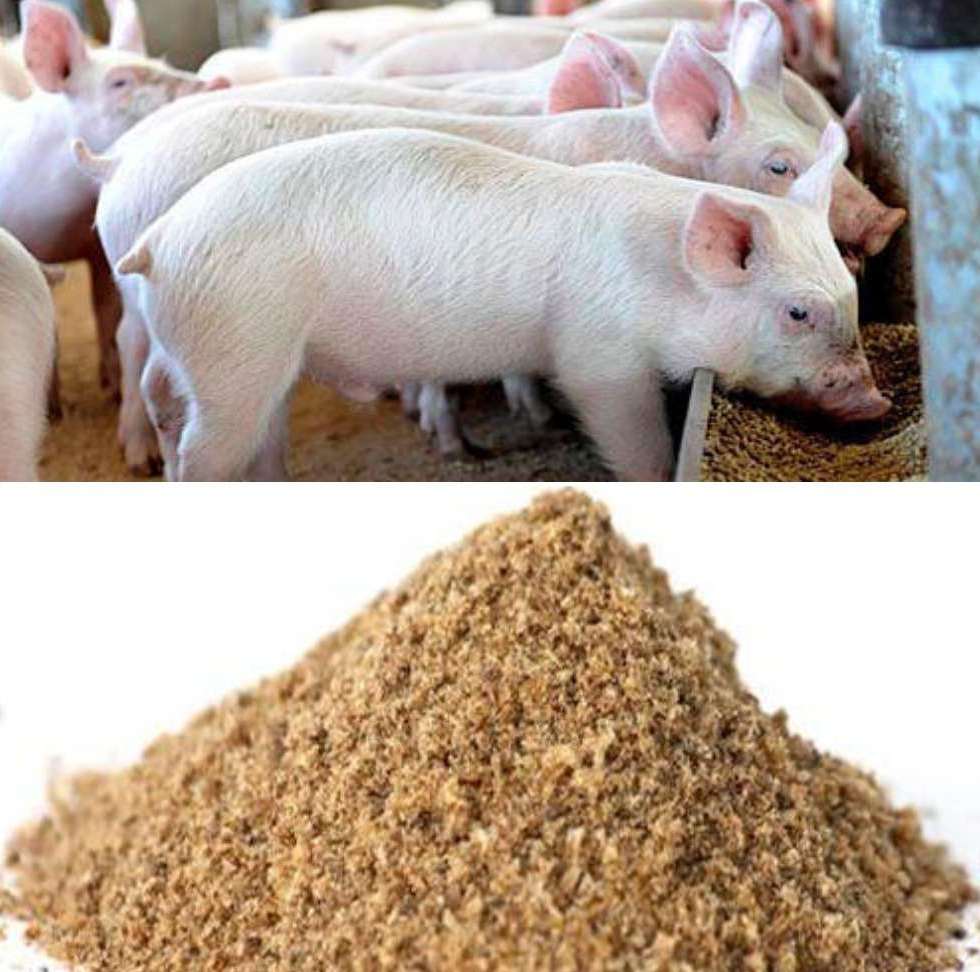Should I add water to Pig’s mash?
There is no cost-effectiveness in soaking grains and consequently, it is a waste of time.
Adding water to mash diets in the ratio of 2:1 (water: food) on a volume basis makes them readily eaten by pigs and you will avoid loss of dry food through spillage.
The digestibility of wet diets is slightly higher (1-2% improvement) and this is not considerable.
Moistening, which is limited to producing a diet with a dough-like consistency, is itself to be recommended.
Excessive moistening beyond this to form a gruel may give negative effects as dry matter intake might suffer.
Is Cooked food better for Pigs?
The capacity for food intake is reached without sufficient consumption of dietary energy.
This is an old method designed undoubtedly to meet the appetite of pigs even when available feeds were not particularly abundant.
The objective of cooking feeds is to improve nutrient digestibility, however, this does not work always.
Experience has shown that cooking of numerous feeds, including feeds that include maize, sorghum, oil meals, etc., has not resulted in an improvement.
It is associated with additional labor and consequently, a complete waste of time.
However, certain starchy feeds, including sweet potato, bananas, and legume seeds are digested less efficiently in the raw state.
In these cases, cooking by boiling improves their digestibility notably. Moreover, in some situations (potato, sweet potato) cooking may make them digest fast.
It is therefore understandable why people formerly did not distribute protein supplement for pigs and charged a high price for cooking.
When should you grind Pigs’ feed?
Grinding is essential for feeds given to young pigs under 40kg because their molars are not properly functional.
Subsequently, grinding may be avoided. However, if mixtures are wanted, grinding helps to ensure there’s homogeneity.
Grinding must not be too fine. In the first place, a fine grist cost much more to produce, and output from the grinding is reduced.
Secondly, fine seeds are associated with considerable losses during production in the form of diet which is blown away.
Finally, it is understood that finely ground feeds promote the development of gastroduodenal ulcers which are more common than thought and one of the factors responsible is the poor growth rate.
It is also important to note that pigs do not like finely ground feeds because, when they breathe while eating, this makes them sneeze frequently.
It is for this reason that feedstuffs that are naturally fine (by-products, animal meals) should be improved by adding water and getting it moistened.
Floury mixtures are often pelleted. Many reasons for this have been proposed:
- Losses due to dust are reduced (although this may also be achieved by moistening at feeding)
- Feed selection is reduced (although this argument is much more valid for poultry than for pigs)
- Feed utilization is improved.
It is necessary to explain this last point. It is true that with certain diets, notably those containing barley, diet utilization is better, and feed conversion ratio is improved.
However, for maize-based diets, the improvement is zero and often negative.
As pelleting presses are expensive pieces of equipment, and as positive results with tropical feeds are not available, it would not be possible to recommend such a course of action.








